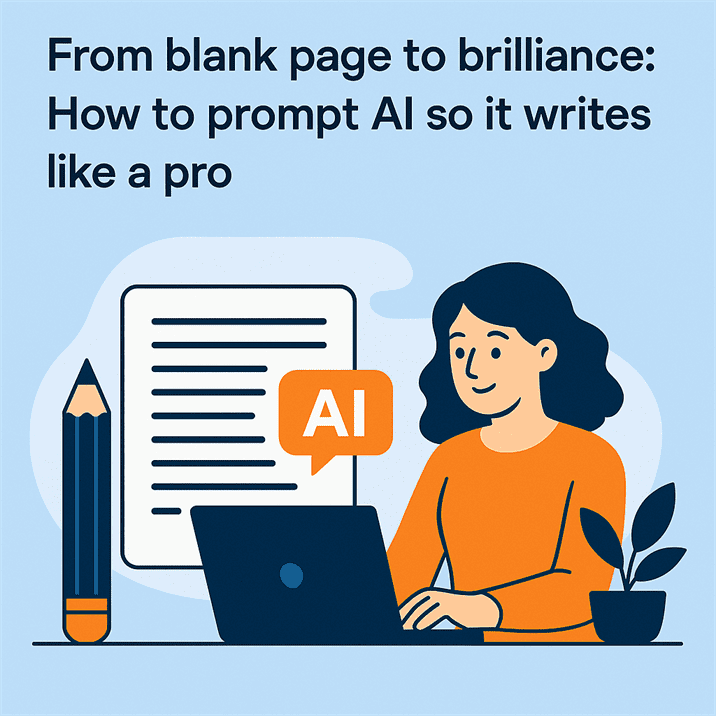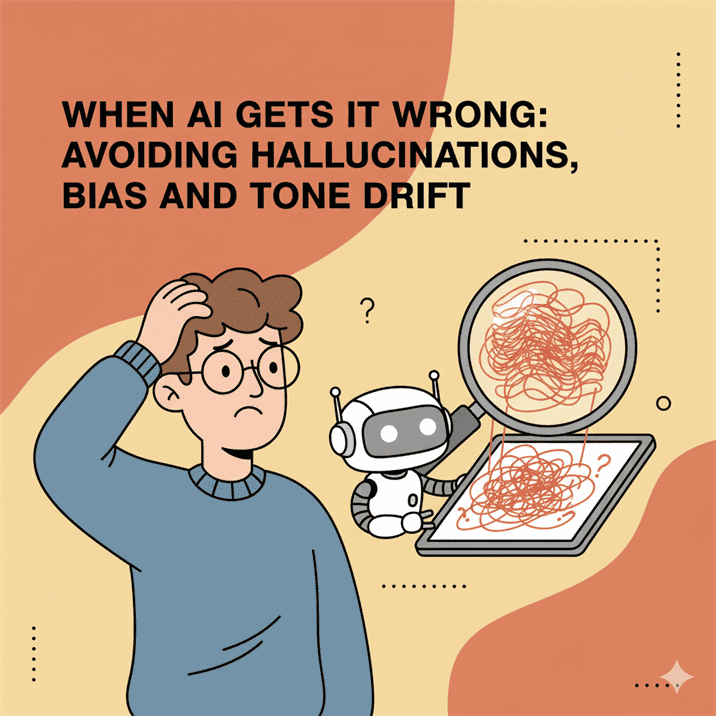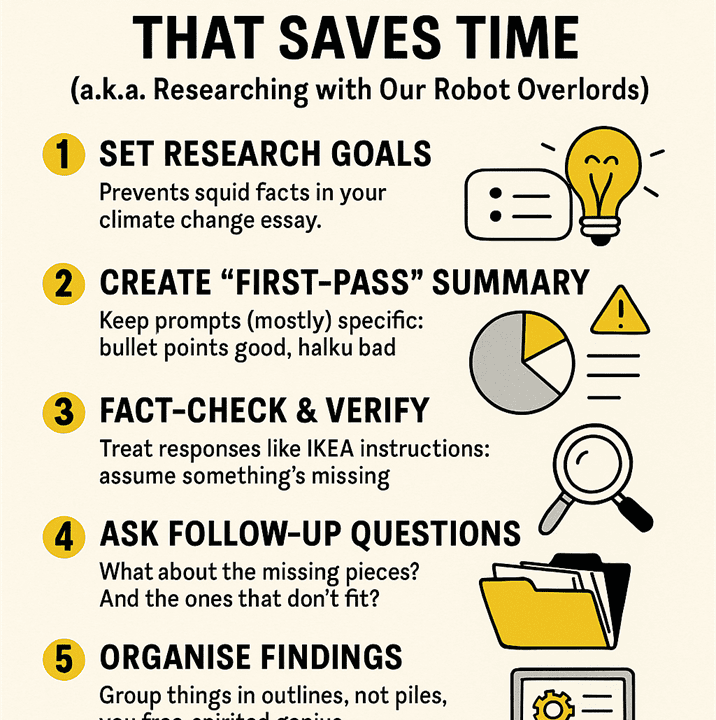The AI first draft myth: Why editing takes more than just a quick proofread

Or: Why AI first drafts aren’t “nearly done”
There’s a common belief that AI first drafts come out about 90% finished and all you need to do is wave a magic proofreading wand.
Sadly, that’s like saying pre-grated cheese is basically a full meal. It’s not.
Editing AI content isn’t about correcting the odd typo. It’s about reshaping something that looks polished on the surface but is often wobbly underneath.
If you skip the deeper work, you risk publishing copy that sounds smooth yet collapses under the weight of its own inaccuracies.
Structural fixes: Flow, logic, hierarchy
AI doesn’t always think in straight lines. Sometimes it gives you a perfect introduction, then forgets what it was talking about halfway through.
Or it throws in conclusions where none were needed.
Your editing workflow should ideally include:
- Checking section order: Does it read logically?
- Pruning repetition: AI loves to rephrase the same point three times.
- Reinforcing hierarchy: Headings and subheadings should flow, not fight.
- Smoothing transitions: Avoid whiplash jumps from one idea to another.
Structure is where AI text improvement begins. Without fixing the skeleton, no amount of proofreading lipstick will save the pig.
Factual verification steps
AI hallucinations are sneaky and can look real until you Google them. Editing AI content means fact checking every stat, name and source.
Steps to follow:
- Highlight all data points and names in the draft.
- Cross-check against reliable sources (think .gov, .edu, or trusted publications).
- Replace hallucinated facts with real ones.
- Document sources so you can back yourself up later.
If it feels tedious, remember it’s less painful than issuing a correction after your readers spot the error first.
Tonal alignment with brand voice
Even when the facts are right, the voice might not be. AI loves drifting into “generic internet professional,” which is the opposite of distinctive.
Your job is to align the tone with your brand voice:
- Strip out the filler (phrases like “in today’s fast-paced digital age” belong in the bin).
- Inject personality, humour or empathy as needed.
- Check for consistency, the intro and conclusion should sound like they were written by the same person.
Editing AI content isn’t just about accuracy. It’s about making sure the end product still sounds like you.
Annotated AI draft example
Here’s a simple before/after example:
AI draft excerpt:
“AI writing tools can provide significant benefits for businesses. They are useful in a variety of industries. However, it is important to be aware of potential issues.”
Edited version:
“AI writing tools are helpful, but they’re not flawless. Use them to speed up drafting but remember to double check facts and keep your brand voice intact.”
The difference? Specificity, tone and readability.
That’s the editing AI content gap most people miss when they think a “quick proofread” is enough.
AI first draft
AI can write, but it can’t think, at least not the way an editor can. A polished piece isn’t born from a machine, it’s shaped by someone who understands structure, flow and intent.
Treat the AI draft as scaffolding, not the finished building.
The real craft lies in refining tone, fixing logic, and adding that human precision that turns something competent into something worth reading.
If you’re not happy with your AI content, give it to an editor that can turn it into something workable.



